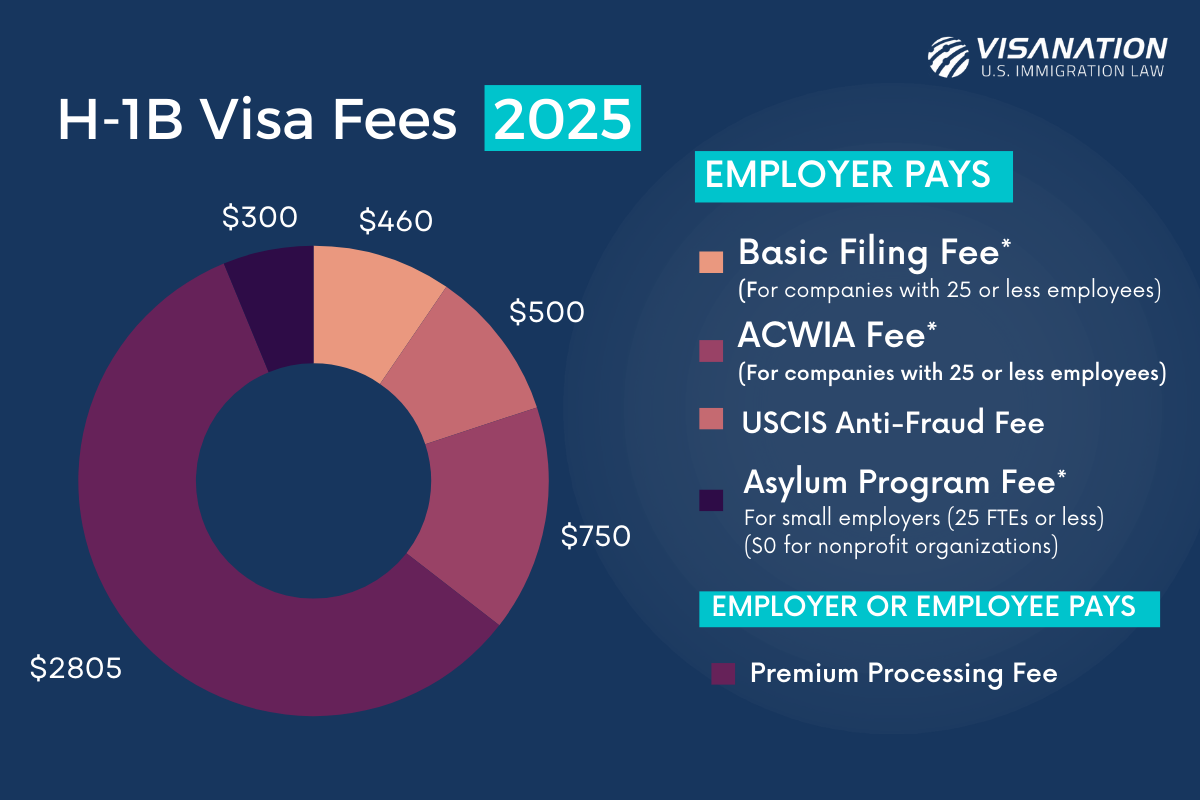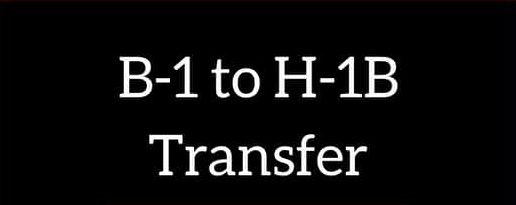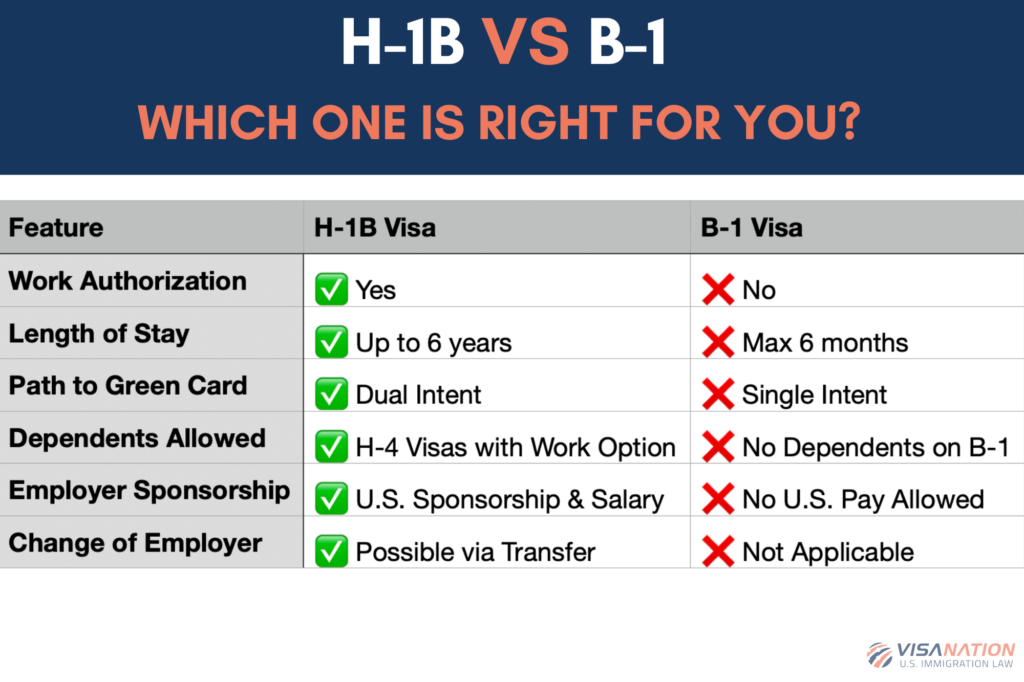Overview
Many B-1 visa holders wish to transfer their status to the H-1B category. A B-1 visa is for temporary business visitors who intend to participate in business activities that are commercial or professional. These may include:
- Consultations with business associates
- Negotiating contracts
- Settling estates
- Participating in training sessions
It’s important to be clear that entering the country on a B-1 visa with the intent to transfer to an H-1B can raise red flags with immigration officials. Be sure that your intent in coming to the U.S. on the B-1 visa aligns with the activities permitted under that visa category, and speak with an immigration attorney for advice on how to transfer status.
B-1 Visa vs. H-1B Visa
There are not many similarities between the B-1 and H-1B visas, so to understand the transfer from B-1 to H-1B status, it’s necessary to explore both visas. Since there is no automated process that takes you from one visa status to the next, if you would like to transfer, you will need to start from square one.
B-1 Visa
The B class visas are visitor visas that are intended for tourists and international business visitors to spend a short amount of time in the U.S., usually about a six-month maximum period of stay. There are two categories within the B class:
B-1: For international visitors who wish to come to the U.S. for business reasons. These can include conferences, conventions, meetings, estate settlements, contract negotiations, and many other things.
B-2: For visitors who would like to visit the U.S. as tourists.
While there are no eligibility requirements for the B-1 other than your intentions (as almost anyone who passes a background check can tour the U.S.), there are some strict limitations to it:
- You cannot be paid for any work done for a U.S. enterprise during your stay. This includes being paid for a performance or participation in events or contests. Put simply, the only entity that you can receive payment from is the overseas company you work for.
- You also cannot enroll in a course in which you earn credits. On the other hand, short recreational courses, such as cooking or pottery, are permitted.
The main drawback to using the B-1 as a medium through which to obtain H-1B status is the short period of stay. As we’ll see, 6 months will likely not be enough time to secure your H-1B visa.
H-1B Visa
The H-1B visa is designed for specialty workers who hold relevant bachelor’s degrees. As this nonimmigrant visa has very high demand, it can be difficult to obtain. Here are the basic requirements:
- You must have a bachelor’s degree
- You must have a valid job offer from a U.S. employer
- That job offer must be for a specialty position that requires your degree
- You and your employer must have a legitimate employer-employee relationship (meaning that you cannot petition for yourself and that your sponsoring employer must be able to control your employment)
If granted, the H-1B would allow you to stay and work in the U.S for three years and then it can be extended for another three years, totalling 6 years (extensions past six years are available under certain conditions only). You can also switch employers at any time by having the new employer file a new petition on your behalf.
Why Transfer from B-1 to H-1B?
There are many advantages that the H-1B has over the B-1, such as the ability to work for a U.S. company and the ability to stay for up to seven years in the country. Moreover, because the H-1B is considered a dual intent visa, you can also apply for your green card while under H-1B status.
If you get H-1B status, your spouse and children can also accompany you on the H-4 visa (in some cases, spouses can apply for work authorization). Moreover, you can change employers on the H-1B by filing a new petition. If your goal is to work in the U.S. for an extended period or even permanently, switching from B-1 to H-1B status may be the perfect option.
Normal H-1B Filing Process
There is no specific method that must be used if you are transferring from B-1 to H-1B status. The process is the same for everyone, and it begins with finding a sponsoring U.S. employer. Your sponsor will be responsible for most of the H-1B process, including filing the petition and paying the requisite fees.
- Step 1: Identifying a Sponsor
- Step 2: Employer Files a Labor Condition Application
- Step 3: Employer Obtains a Prevailing Wage
- Step 4: Employer Submits Form ETA-9035
- Step 5: Employer Files Form I-129
- Step 6: Complete the Application
The normal H-1B filing process involves the U.S. sponsoring employer filing Form ETA-9035 (Labor Condition Application) online through the iCert Portal. They must then receive approval of the LCA before filing the I-129 (Petition for a Nonimmigrant Worker). Part of having the LCA certified by the Department of Labor includes obtaining a prevailing wage. After obtaining the prevailing wage, the employer will need to submit the LCA by filing Form ETA 9035 with the DOL. After the LCA process is finished, the employer can submit the H-1B petition by filing the I-129.
There is an annual cap on the H-1B visa. 65,000 are allotted from the regular cap (6,800 are reserved for Chile and Singapore nationals) plus an additional 20,000 for applicants with a U.S. master’s degree or higher.
Can I Use Premium Processing?
Yes, because the H-1B uses the I-129 petition, it is possible to use the premium processing service to have the USCIS adjudicate your petition in just 15 business days. However, there are several things to note about this:
- It does not guarantee that your petition will be chosen in the lottery or increase your chances of selection. It also does not guarantee that your petition will be approved once selected.
- Because you cannot begin working until six months after the petition is filed, having your petition processed in 15 days may not be very advantageous. That being said, in cases such as if you receive a Request for Evidence, premium processing might be helpful. Your immigration attorney will be able to help you through this decision.
How Much Does the H-1B Visa Cost?
Making the B-1 to H-1B transfer can be a costly endeavor. However, it is important to note which H-1B fees are to be paid by your employer and which are your responsibility. The following are to be paid by your employer:
|
Fee |
Amount |
Responsible for Fee |
|
Registration Fee |
$215 |
Employer |
|
Basic Filing Fee |
$780 |
Employer |
|
Public Law 114-113 Fee |
$4,000 (only if 50+ employees) |
Employer |
|
Premium Processing (optional) |
$2,805 |
Employer or Employee |
|
USCIS Anti-Fraud Fee |
$500 |
Employer |
|
ACWIA Education and Training Fee |
$750 (less than 25 employees) $1,500 (more than 25 employees) |
Employer |
|
Asylum Program Fee |
$600 (if 26+ employees) |
Employer |
|
Attorney Fee |
Variable |
Employer |
Additionally, you may want to bring dependents via the H-4 visa, which costs $205 to file for each dependent.

VisaNation Law Group’s Legal Fees
Since the stages are tiered, only certain companies will eventually file the complete petitions:
- Stage one: $300 for the initial registration process, which includes all required preliminary case analyses.
- Stage two: $2,600 will be due if the case is selected in the lottery for filing, including all form/support letter preparation plus case filing within the timeframe.
- Stage three: $500–$1,600 will be the cost of a Request For Evidence (RFE) response, should one later be issued on the case.
B-1 to H-1B Transfer Procedure
If your H-1B petition is approved, then the soonest you can start under the H-1B visa is October 1st. If you happen to be delayed and find that the H-1B quota has been reached, then you’ll have to wait until the following year to have the petition filed on your behalf by the sponsoring employer. Note that you must have a valid status in the U.S. to file from here, otherwise, you’ll need to return to your home country and continue the process through consular processing.
As you can see, there is exactly a six month gap between when your petition is filed and when you will obtain H-1B status. Because the longest period of stay under a B-1 visa is six months, it would require careful timing and a highly experienced attorney to use the B-1 visa as a transitioning point to H-1B status.
Begin the H-1B Filing Process Early
The attorneys at VisaNation Law Group can help you begin the filing process. On average this can take anywhere from six to nine months, however the sooner you get started the better your chances for an approval. Also be sure to discuss premium process if your case needs to be handled in an expedited fashion. By opting for premium processing you’ll receive an answer as to whether or not you were approved in less than a months. Additional costs will be incurred for this option.
Not sure if an H-1B visa is the appropriate course of action? There are alternatives to the H-1B visa that may be more beneficial to your situation. These include the
- O-1 Visa for those who have extraordinary ability or achievement in the field of business, education, arts, science, athletics, etc.
- Another option is the L-1 visa, which is used by companies that have offices within the United States to transfer employees temporarily to the U.S.
- Learn more alternatives in our guide: H-1B Visa alternatives.
 Shilpa Malik
Shilpa Malik  Boris Ignachkov
Boris Ignachkov 
